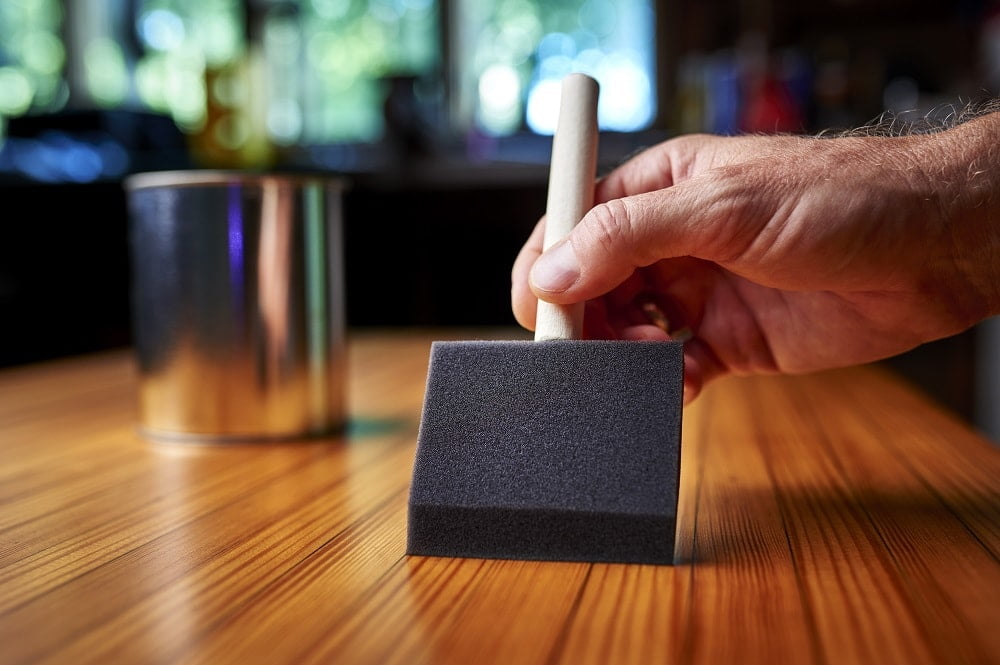Is stained woodwork coming back in style? This question has been on the minds of interior design enthusiasts and homeowners alike as they seek to update and refresh their living spaces. In this article, we will delve into the history of stained woodwork in interior design, explore the impact of painted woodwork on design trends, and discuss whether stained woodwork is making a comeback in today’s interior design landscape.
The allure of stained woodwork lies in its timeless appeal and natural beauty. From rich mahogany to warm oak, the warmth and depth of stained wood can add a touch of elegance and sophistication to any space.
In recent years, however, the trend has shifted towards painted woodwork, with many homeowners opting for crisp white or bold colors to create a modern aesthetic. But as design trends continue to evolve, there is a growing curiosity about the resurgence of stained woodwork and its potential to make a comeback in interior design.
In the following sections, we will examine current trends in interior design and consider how stained woodwork fits into this changing landscape. Whether you prefer a traditional or modern aesthetic, incorporating stained woodwork into your home can bring a sense of warmth and versatility that is hard to achieve with other materials. With expert insights from designers, we will also explore how this classic element can be embraced in different settings to create timeless elegance.
The History of Stained Woodwork in Interior Design
The use of stained woodwork in interior design dates back centuries, with its rich and timeless appeal never truly going out of style. In fact, stained woodwork has been a staple in traditional and classic interior design styles, adding warmth, elegance, and sophistication to any space. Its natural beauty and versatility have made it a go-to choice for many homeowners and designers looking to create a warm and inviting atmosphere.
Stained woodwork has been a prominent feature in interior design throughout history, from the elaborate woodcarvings of the Victorian era to the classic wood paneling of Tudor-style homes. It was considered a symbol of wealth and craftsmanship, often seen in the grand estates and manor houses of the past. This rich history has contributed to stained woodwork’s enduring appeal and its perception as a timeless element in interior design.
In recent years, there has been a shift towards painted woodwork in interior design trends, with many homeowners opting for white or colored trims and moldings. While this trend has its own charm and modern aesthetic, there is now a growing interest in bringing back the natural beauty of stained woodwork. Designers are reintroducing this classic element into contemporary interiors, showcasing its ability to add depth, character, and a sense of connection to nature within living spaces.
| Stained Woodwork Features | Benefits |
|---|---|
| Natural beauty | Warmth and elegance |
| Versatility | Timeless appeal |
| Rich history | Symbol of wealth and craftsmanship |
The Rise of Painted Woodwork and Its Impact on Interior Design Trends
The use of painted woodwork in interior design has been a dominant trend for several decades. However, as interior design styles continue to evolve, there is a growing interest in the return of stained woodwork.
This shift can be attributed to the timeless appeal and natural beauty that stained wood brings to a space. With the resurgence of vintage and traditional design elements, many homeowners and designers are considering stained woodwork as a way to add warmth and character to their interiors.
In recent years, there has been a noticeable shift towards incorporating natural materials into interior design. Stained woodwork fits perfectly within this trend, as it adds an organic and earthy element to any space. Design experts believe that the rise of painted woodwork was driven by the desire for a clean and modern aesthetic. However, more people are now seeking warmth and authenticity in their homes, leading to a renewed interest in stained woodwork.
Another factor contributing to the comeback of stained woodwork is the increasing popularity of rustic and farmhouse-style interiors. These design styles emphasize natural textures and materials, making them well-suited for showcasing the beauty of stained wood. As a result, homeowners are exploring various ways to incorporate stained woodwork into their homes, from exposed ceiling beams to reclaimed wooden furniture pieces.
It’s important to note that while painted woodwork can still be a stylish choice for certain interiors, there is a growing appreciation for the versatility and elegance of stained woodwork. As interior design continues to embrace elements from different eras and styles, it’s clear that stained woodwork is making a comeback that is rooted in its timeless appeal.
| Stained Woodwork Trend | Rising Interest |
|---|---|
| Natural beauty | Organic element |
| Authenticity | Versatility |
Current Trends in Interior Design
Stained woodwork has always been a classic and timeless choice in interior design. However, in recent decades, painted woodwork has taken the spotlight, leaving stained woodwork to take a backseat. But now, the question on everyone’s mind is: is stained woodwork making a comeback in interior design?
There are signs that stained woodwork is indeed making a resurgence in interior design. Many homeowners and designers are rediscovering the natural beauty and warmth of stained wood. With the trend towards sustainable and eco-friendly materials, there is a renewed appreciation for the organic appeal of stained woodwork.
In addition, the popularity of modern farmhouse and rustic chic interior styles has contributed to the revival of stained woodwork. These design trends embrace the imperfections and natural elements of wood, making stained woodwork a perfect fit for creating a cozy and inviting atmosphere in any home. If you are considering incorporating this trend into your home, consider these tips for embracing the natural beauty of stained woodwork:
- Use reclaimed or salvaged wood for an authentic and character-filled look
- Pair stained woodwork with neutral color palettes to create a harmonious space
- Balance out the richness of stained wood with lighter furnishings and decor for contrast
With all these factors considered, it’s safe to say that stained woodwork is indeed coming back in style. As more homeowners seek to create warm and inviting spaces with a touch of natural elegance, it’s clear that the timeless appeal of stained woodwork is here to stay.
Embracing the Natural Beauty of Stained Woodwork
Stained woodwork has been a classic element in interior design for many years, and its timeless appeal is undeniable. Many homeowners and designers are now looking to incorporate stained woodwork once again into their homes, bringing back a sense of warmth and natural beauty. If you’re considering embracing this trend, here are some tips for incorporating stained woodwork into your home:
1. Choose the Right Wood: When incorporating stained woodwork into your home, it’s important to choose the right type of wood. Oak, cherry, mahogany, and walnut are popular choices for creating a rich, warm look. Consider the existing color scheme in your home and select a wood type that complements it.
2. Consider Contrasting Elements: Stained woodwork can create a striking contrast when paired with lighter elements such as white walls or light-colored furniture. This juxtaposition can create visual interest and highlight the beauty of the wood.
3. Use Stained Wood Accents: If you’re not ready to fully commit to staining all of the woodwork in your home, consider incorporating stained wood accents instead. This could include adding stained wood trim around doorways or windows, or incorporating stained wood shelving or cabinetry in key areas of your home.
By following these tips, homeowners can bring back the natural beauty of stained woodwork into their homes in a way that feels fresh and modern.
The Versatility of Stained Woodwork
Stained woodwork has long been a staple of traditional interior design, adding warmth and character to homes for centuries. However, as interior design trends shifted towards modern and minimalist aesthetics, painted woodwork became the go-to choice for many homeowners. But now, there is a growing trend towards incorporating stained woodwork into modern interiors, showcasing its versatility and timeless appeal.
Traditional Interiors
In traditional interiors, stained woodwork has always been a prominent feature, adding a sense of elegance and sophistication to the space. Whether it’s rich mahogany trim or rustic oak beams, stained woodwork can create a warm and inviting atmosphere that is perfect for classic and formal settings. With the resurgence of traditional interior design elements, stained woodwork is making a comeback in homes seeking to embrace heritage and craftsmanship.
Modern Interiors
Contrary to popular belief, stained woodwork can also complement modern interiors with clean lines and contemporary finishes. By incorporating sleek and minimalistic furniture pieces, stained woodwork adds warmth and texture to the space without overwhelming the overall aesthetic. In modern interiors, lighter stain shades such as ash or maple are gaining popularity for their ability to create a sense of airiness while still providing the natural beauty of wood.
The Blending of Styles
One of the most exciting aspects of incorporating stained woodwork into interior design is the ability to blend traditional and modern styles seamlessly. By combining elements such as exposed wooden beams with sleek metal accents or pairing stained wood trim with minimalist furniture, homeowners can achieve a unique and harmonious balance between old-world charm and contemporary design.
As designers continue to explore new ways of infusing character into modern spaces, it’s clear that stained woodwork is making a comeback in interior design. Whether it’s used in traditional or modern settings, its timeless elegance is undeniable. With its versatility in complementing various decor styles, it’s safe to say that stained woodwork is here to stay.
Expert Insights
In recent years, there has been a noticeable shift in interior design trends, with a resurgence of interest in stained woodwork. This natural and classic element is making a comeback in modern homes, bringing with it a timeless elegance that adds warmth and character to any space. Designers and homeowners alike are recognizing the beauty and versatility of stained woodwork, leading to its increased popularity in interior design.
Why Stained Woodwork Is Making a Comeback
The appeal of stained woodwork lies in its ability to bring nature indoors. The rich tones and grain patterns of wood add a sense of warmth and depth to a room that painted surfaces simply cannot replicate. As homeowners seek to create spaces that feel inviting and cozy, the organic beauty of stained woodwork provides a perfect solution.
Additionally, the trend toward sustainable and eco-friendly design has contributed to the resurgence of stained woodwork. Many homeowners are drawn to the idea of using natural materials in their interiors, and incorporating stained woodwork is an ideal way to achieve this while also adding visual interest and texture to their homes.
Incorporating Stained Woodwork Into Modern Interiors
One of the key reasons for the renewed popularity of stained woodwork is its ability to seamlessly blend with various interior styles. Whether it’s traditional or modern, stained woodwork can complement any design aesthetic. From rustic farmhouse charm to sleek contemporary spaces, there are numerous ways to incorporate stained woodwork into modern interiors.
Embracing this trend can involve anything from adding wooden beams or trim work to installing custom cabinetry or shelving made from beautifully stained woods. By strategically integrating these elements, homeowners can achieve a sophisticated look that feels both timeless and current.
Conclusion
As interior design trends continue to evolve, one question that often arises is whether stained woodwork is making a comeback. Looking back at the history of interior design, it’s clear that stained woodwork has always held a timeless appeal. From traditional to modern interiors, the natural beauty and warmth of stained woodwork have been a staple in homes for centuries.
While painted woodwork has dominated interior design trends in recent years, there is a noticeable shift towards embracing the elegance of stained woodwork once again. Designers and homeowners alike are recognizing the versatility of stained woodwork, as it seamlessly complements a wide range of interior styles.
Incorporating stained woodwork into your home can be as simple as refinishing existing wood features or adding new elements such as trim, doors, or cabinets. By embracing the natural beauty of stained woodwork, you can create a warm and inviting atmosphere that adds depth and character to any space.
As designers weigh in on this resurgence, it’s evident that stained woodwork is not only making a comeback but also bringing with it an enduring elegance that enhances any interior design style.
Frequently Asked Questions
Is Stained Trim Dated?
Stained trim can be seen as dated depending on personal preference and the overall design aesthetic. Some people may prefer the natural look of stained wood trim, while others may find it old-fashioned.
Will Stained Wood Trim Come Back in Style?
The popularity of stained wood trim may come back in style, as design trends tend to cycle over time. With the resurgence of interest in natural and earthy elements in interior design, stained wood trim could make a comeback as a classic and timeless option.

Hi everyone! I’m a woodworker and blogger, and this is my woodworking blog. In my blog, I share tips and tricks for woodworkers of all skill levels, as well as project ideas that you can try yourself.





